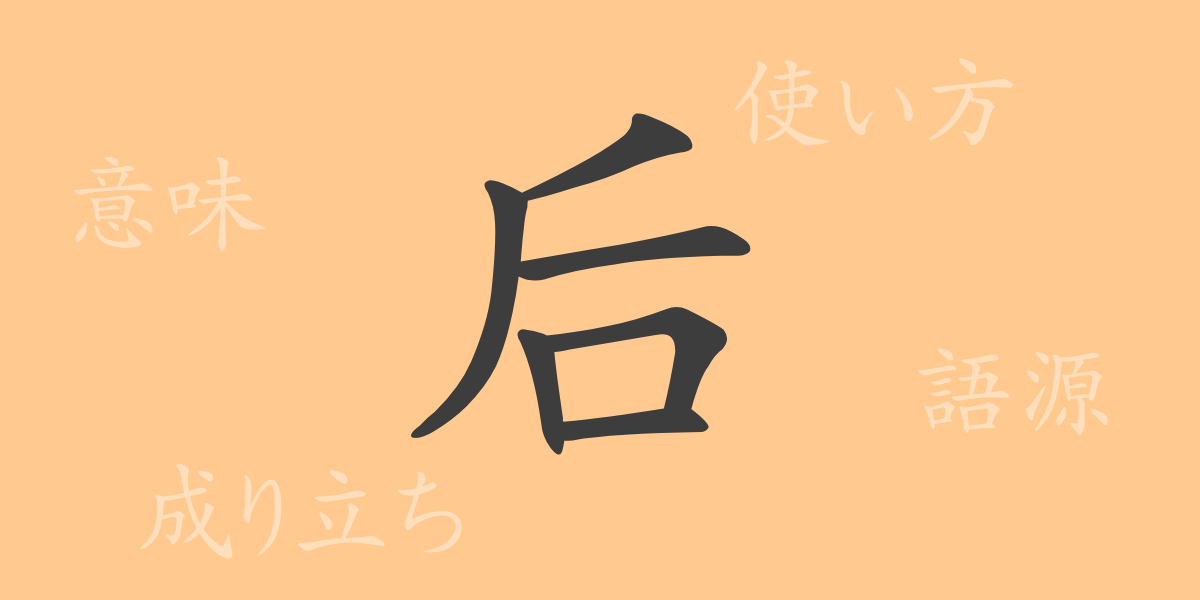Japanese kanji allow for rich expression through the meanings embedded in their shapes and sounds. “后” (きさき: kisaki) is included in the list of common kanji and reflects a deep historical and cultural background. This article explores the history and meaning of the kanji “后” (きさき: kisaki) and its role in contemporary Japanese.
Origins of 后 (きさき: kisaki)
The kanji “后” (きさき: kisaki) has been used since ancient China to denote the emperor’s wife or a female ruler. The character’s form is said to represent a special hat worn by women of high status, symbolizing power and femininity. Over time, this kanji was introduced to Japan, where it acquired new meanings within Japanese culture and language.
Meaning and Usage of 后 (きさき: kisaki)
The primary meanings of the kanji “后” (きさき: kisaki) include “the wife of a king” and “a female ruler.” It is also used to refer to women with respect. In Japan, “后” (きさき: kisaki) is commonly used to refer to royal women such as empresses and queens, like in “皇后” (こうごう: kougou) for empress and “王后” (おうごう: ougou) for queen.
Readings, Stroke Count, and Radical of 后 (きさき: kisaki)
Understanding the readings and structure of the kanji “后” (きさき: kisaki) enhances comprehension of the Japanese language.
- Readings: The on-yomi (Chinese reading) is “コウ” (こう: kou), and the kun-yomi (Japanese reading) is “きさき” (きさき: kisaki).
- Stroke Count: The kanji “后” (きさき: kisaki) consists of 6 strokes.
- Radical: The radical is “口” (くち: kuchi), which comes from the kanji “口” (くち: kuchi).
Compounds, Idioms, and Proverbs Featuring 后 (きさき: kisaki)
Compounds, idioms, and proverbs containing “后” (きさき: kisaki) convey historical and cultural significance. Examples include “皇后” (こうごう: kougou) for empress and “王后” (おうごう: ougou) for queen. These terms are deeply rooted in Japanese history and used to express respect for royalty.
Conclusion on 后 (きさき: kisaki)
The kanji “后” (きさき: kisaki) has been used from ancient times to the present to signify the important positions of female rulers and royal wives. This character embodies historical significance and the respect for women in Japanese culture. Understanding “后” (きさき: kisaki) in Japanese allows us to appreciate the rich cultural and historical context conveyed through language.

























